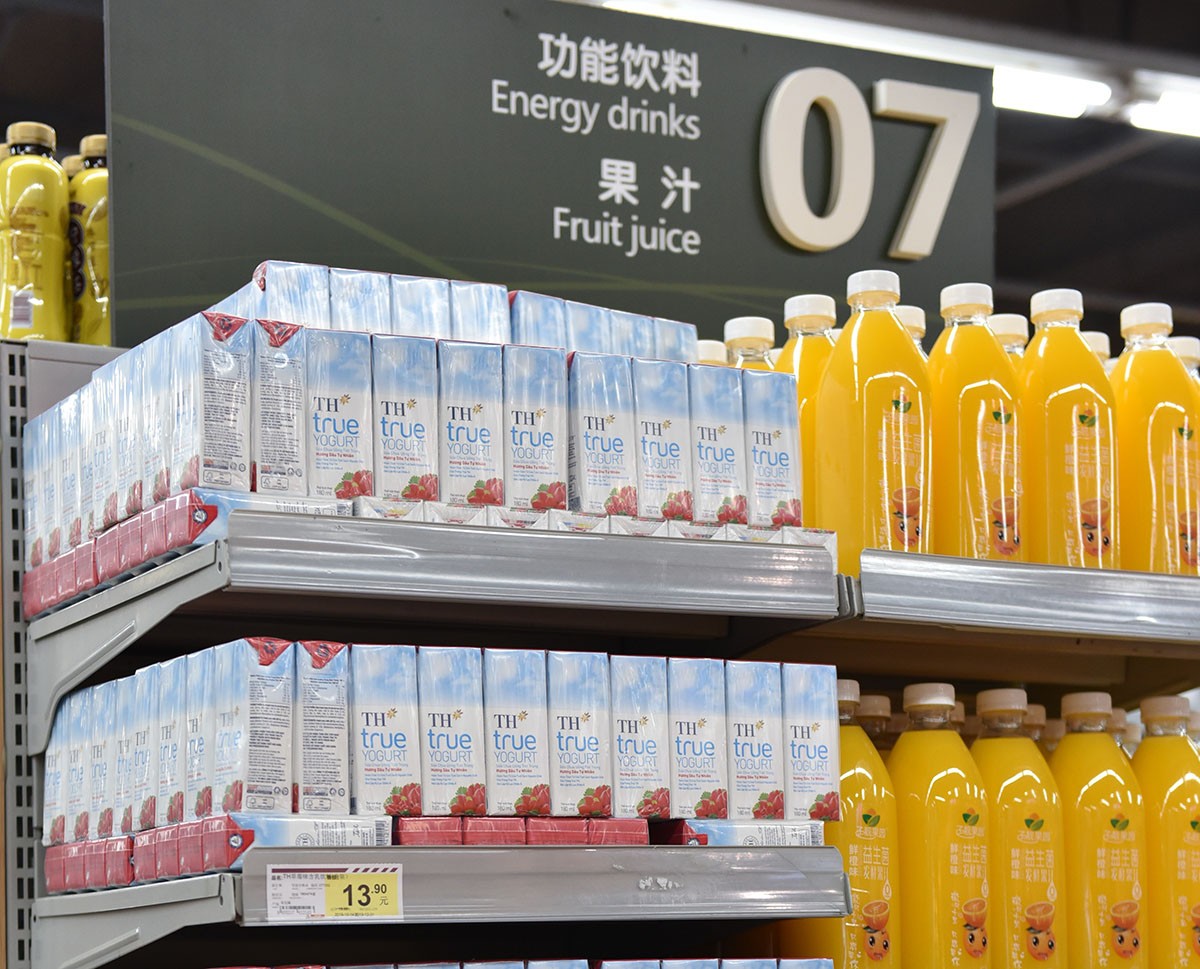
The National Brand Program 'empowers' Vietnamese businesses to soar further
Latest
 |
| The National Brand Program 'empowers' Vietnamese businesses to soar further. The first shipment of TH true Milk, a Vietnamese brand, granted an export code for shipment to China. (Photo: BCT) |
In the context of deepening international economic integration and heightened competitiveness, businesses are required to have strategies for building, developing, promoting, and safeguarding their brands. Simultaneously, as Vietnam increasingly engages in new-generation free trade agreements, brand building holds more significance and plays a vital role, becoming a soft power that propels economic development.
The Vietnam National Brand Program was officially launched in 2003 with the goal of constructing and developing the national brand by supporting businesses in creating and developing strong brands. This aims to promote Vietnam's image as a nation with quality goods and services, fostering credibility and enhancing competitiveness for domestic and international enterprises in the market.
After 20 years of implementing the program, many Vietnamese corporations and enterprises have gradually built, developed and promoted their brands more professionally. This has contributed to enhancing their competitive capabilities and positions in both domestic and international markets.
For instance, Viettel, Vietnam's largest Telecommunications and Information Technology Group, ranks among the top 15 global mobile network providers in subscriber numbers and among the top 40 worldwide in revenue. Truong Hai Auto Corporation (Thaco) is steadily rising to one of the leading automobile manufacturer in the ASEAN region. TH Milk Corporation was abled to enter China, the world’s second-largest consumer market for milk.
Additionally, with support from the National Brand Program, many Vietnamese businesses have recognized the vital role of branding, leading them to invest earnestly in building, developing, and preserving their product and corporate brands.
In 2018, there were only 14 Vietnamese National Brand enterprises in the Top 50, accounting for 28%. However, by 2022, after five years, this number increased to 21 enterprises, representing 42%. Behind a reputable national brand lie the success stories of enterprise and product brands in the market.
Nevertheless, many businesses admit that the path to achieving and sustaining a National Brand is not without challenges. Take Fimex Vietnam's frozen shrimp for example.
Mr. Ho Quoc Luc, Chairman of Fimex Vietnam's Board of Directors, highlighted that aside from productive results and effective business operations, a brand requires various other conditions such as employing advanced technology, traceability of origins, and sustainable production.
As a company successfully placing its branded products into European retail systems Mr. Nguyen Duy Thuan, CEO of Loc Troi Group, shared that the company’s "Vietnam Rice" brand officially made its way onto the shelves of two major hypermarket systems in France, Carrefour, and Leclerc.
To achieve this, Loc Troi’s rice not only met the highest standards that the European market demands regarding cultivation procedures and crop protection but also ensured sustainability and prioritized human and environmental protection in large-scale agricultural production.
Prime Minister Pham Minh Chinh emphasized that products attaining the National Brand status are not just resources for individual businesses but also for the entire nation. Therefore, building and preserving the national brand holds strategic significance for both enterprises and the country.
In the coming period, the Prime Minister urged the Vietnamese business community to execute their tasks and central solutions effectively. This involves better exploiting potentials, strengths, and advantages to robustly develop in the domestic market, drive exports, actively expand into international markets, and engage more deeply in global supply chains.
Simultaneously, he asked businesses to enhance their product’s reputation, quality, and competitiveness through advanced production systems, progressive business management, intensifying digital transformation, adhering to state regulations and laws, and fulfilling social responsibilities.
Vietnam has been assessed as a “bright spot” in the construction and development of the national brand. According to Brand Finance, Vietnam's national brand was valued at 431 billion USD in 2022, a remarkable 11% increase from 388 billion USD in 2021.





















